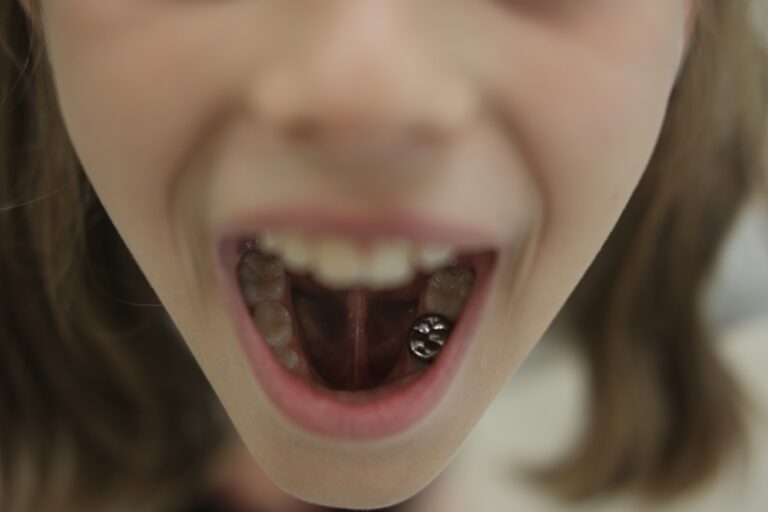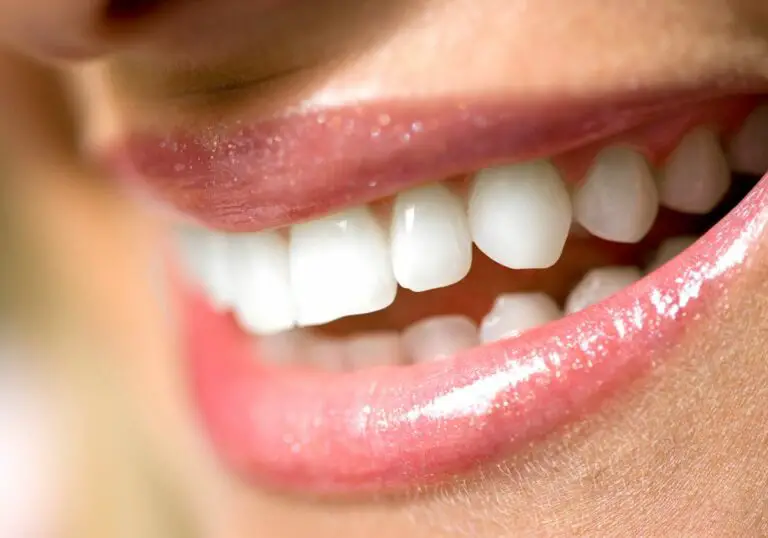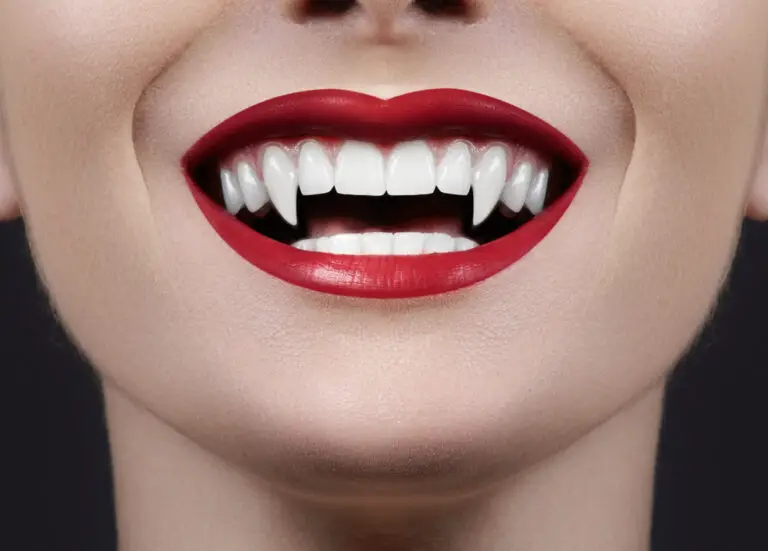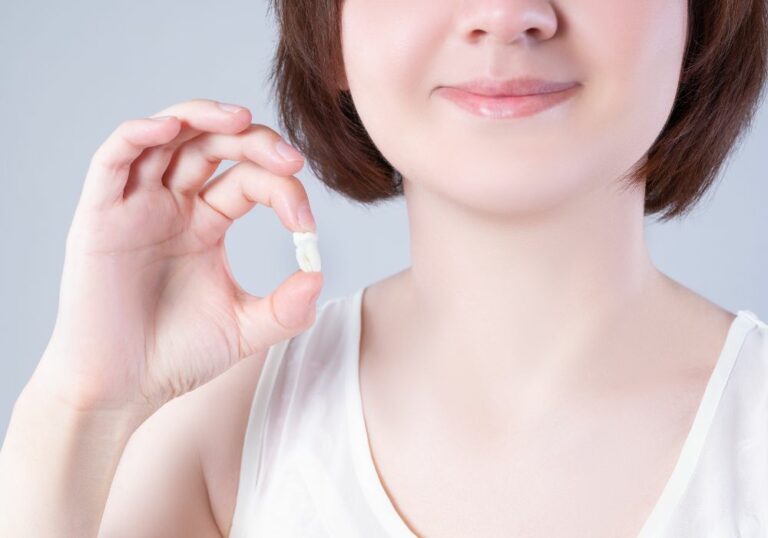Are you wondering if you can brush your dog’s teeth with regular toothpaste? The answer is no. Human toothpaste is not safe for dogs as it contains ingredients that can be harmful to them. For instance, most human toothpaste contains xylitol, an artificial sweetener that can cause a sudden release of insulin, leading to hypoglycemia, seizures, and even liver failure in dogs.
Toothpaste designed for humans is not formulated to be swallowed, which can be a problem for dogs who cannot spit it out. Swallowing toothpaste can cause stomach upset, vomiting, and diarrhea in dogs. Moreover, human toothpaste can cause irritation and inflammation of the gums and other oral tissues in dogs, leading to discomfort, pain, and even infection.
The good news is that there are toothpaste options specifically designed for dogs that are safe and effective. In the following sections, we will explore why regular toothpaste is not suitable for dogs and provide tips on how to brush your dog’s teeth using dog-specific toothpaste.
Why Brushing Your Dog’s Teeth is Important
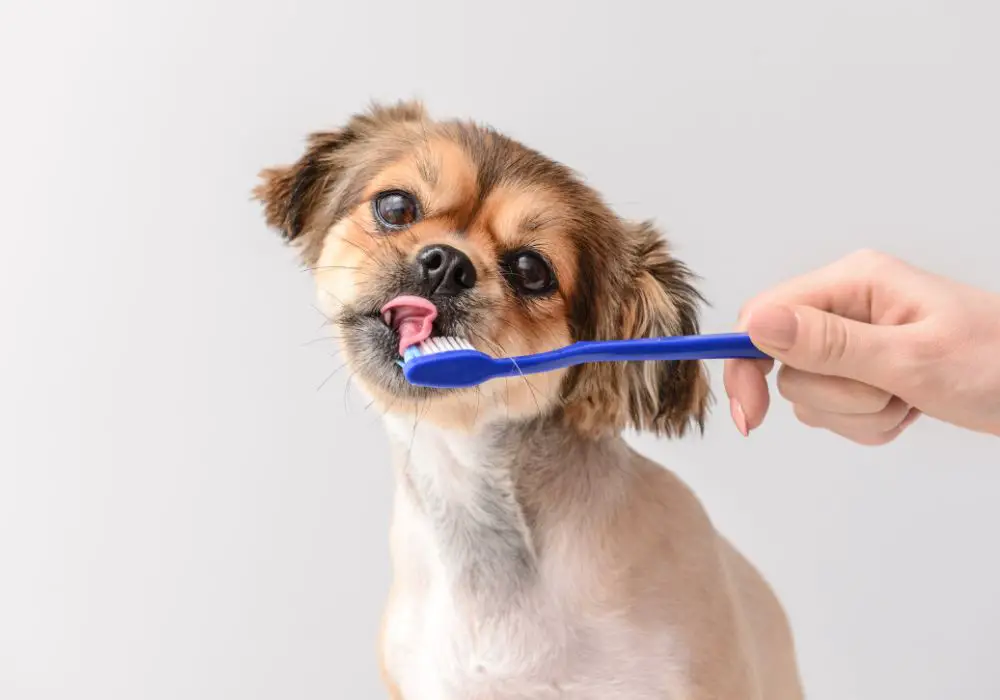
Brushing your dog’s teeth is an essential part of their overall health care routine. Just like humans, dogs can develop dental problems such as plaque buildup, tartar formation, gum disease, and bad breath. These problems can lead to tooth decay, tooth loss, and even more serious health issues if left untreated.
By brushing your dog’s teeth regularly, you can prevent these problems and keep your furry friend’s mouth healthy. Here are some of the benefits of brushing your dog’s teeth:
- Prevents dental problems: Brushing your dog’s teeth helps prevent the buildup of plaque and tartar, which can lead to gum disease and tooth decay. It also helps freshen their breath.
- Saves money: Regular dental cleanings at the vet can be expensive. By brushing your dog’s teeth at home, you can save money on these procedures.
- Improves overall health: Poor dental health can lead to other health problems such as heart disease, kidney disease, and diabetes. By keeping your dog’s mouth healthy, you can improve their overall health and quality of life.
- Strengthens your bond: Brushing your dog’s teeth can be a bonding experience. It helps build trust and strengthens your relationship with your furry friend.
Overall, brushing your dog’s teeth is an important part of their health care routine. It can prevent dental problems, save you money, improve their overall health, and strengthen your bond. So, make sure to include brushing your dog’s teeth in their daily routine.
The Risks of Using Regular Toothpaste
Using regular toothpaste on your dog’s teeth can be harmful. Human toothpaste contains ingredients that are safe for humans but can be toxic to dogs. Here are some of the risks associated with using regular toothpaste on your dog:
Fluoride Poisoning
Human toothpaste often contains fluoride, which can cause fluoride poisoning in dogs if ingested in large quantities. Dogs are likely to swallow the toothpaste while you brush their teeth, so using human toothpaste can be dangerous for them.
Upset Stomach
The ingredients in human toothpaste can cause an upset stomach in dogs. Dogs have a more sensitive digestive system than humans, and the chemicals in toothpaste can cause vomiting, diarrhea, and other digestive problems.
Allergic Reactions
Dogs can be allergic to some of the ingredients in human toothpaste. Allergic reactions can cause itching, swelling, and other symptoms that can be uncomfortable or even dangerous for your dog.
Dental Problems
Using human toothpaste on your dog’s teeth can actually make dental problems worse. The ingredients in toothpaste can irritate your dog’s gums and cause inflammation, making it harder for your dog’s mouth to heal.
To avoid these risks, it’s best to use toothpaste specifically designed for dogs. These toothpastes are formulated to be safe for dogs and can help keep your dog’s teeth clean and healthy.
Understanding Dog-Specific Toothpaste
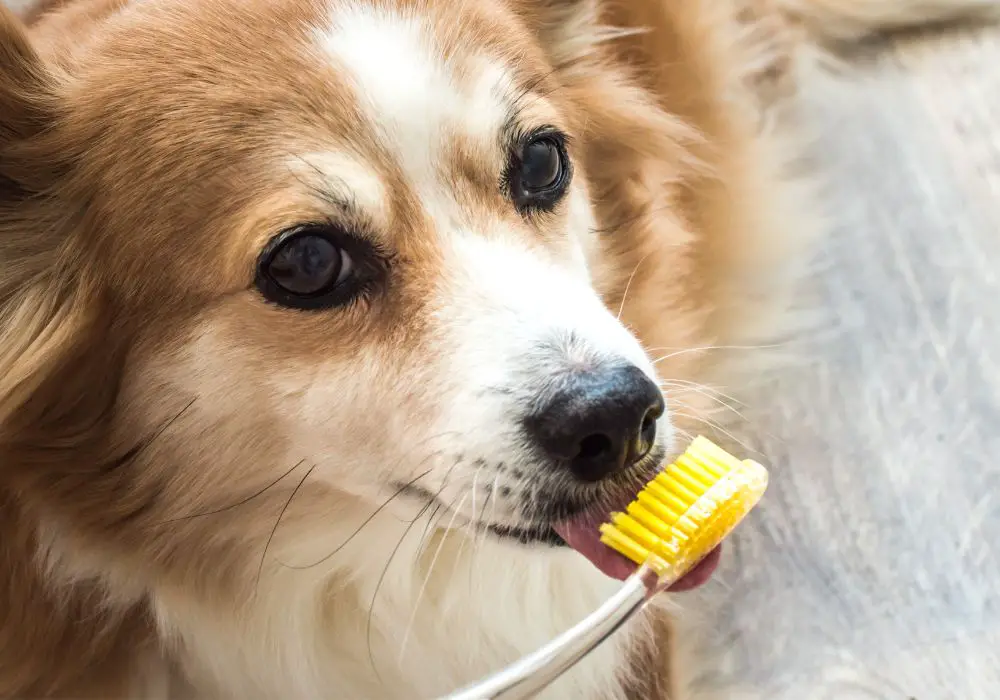
When it comes to brushing your dog’s teeth, it’s important to use toothpaste that is specifically designed for dogs. Human toothpaste contains ingredients that can be harmful to dogs if ingested, such as fluoride and xylitol. Dog-specific toothpaste, on the other hand, is formulated with ingredients that are safe for dogs to swallow.
One type of dog toothpaste is enzymatic toothpaste. This type of toothpaste contains enzymes that help reduce bacteria in your dog’s mouth, which can lessen tartar buildup and improve bad breath. Enzymatic toothpaste is a popular choice among pet owners because it is easy to use and effective in promoting good oral hygiene in dogs.
Another type of dog toothpaste is natural toothpaste. This type of toothpaste is made with natural ingredients, such as neem oil, aloe vera, and baking soda. Natural toothpaste is a great option for dogs with sensitive teeth or those who are prone to allergies. It is also a good choice for pet owners who prefer to use natural products on their pets.
When choosing a dog toothpaste, make sure to read the label carefully and choose a product that is specifically designed for dogs. Avoid using human toothpaste or other household products on your dog’s teeth, as they can be harmful and even toxic to your furry friend.
Overall, using dog-specific toothpaste is an important part of maintaining your dog’s oral health. By brushing your dog’s teeth regularly with toothpaste that is safe and effective, you can help prevent dental problems and keep your furry friend healthy and happy.
Steps to Brush a Dog’s Teeth
Brushing your dog’s teeth is an important part of maintaining their overall health. With the right tools and techniques, you can make the process easy and stress-free for both you and your furry friend. Here are the steps to brush a dog’s teeth:
Choosing the Right Tools
Before you start brushing your dog’s teeth, you need to choose the right tools. Here’s what you’ll need:
- Dog toothbrush: A toothbrush designed for dogs is essential. It has softer bristles and a smaller head than a human toothbrush, making it easier to maneuver in your dog’s mouth.
- Dog toothpaste: Never use human toothpaste on your dog. It can be harmful if ingested and may contain ingredients that are toxic to dogs. Instead, use a toothpaste specifically formulated for dogs. These toothpastes come in flavors that dogs love, such as chicken or beef, making the process more enjoyable for them.
Making Your Dog Comfortable
Before you start brushing, it’s important to make your dog comfortable. Here are some tips:
- Get your dog used to having their mouth touched: Start by gently touching your dog’s mouth and teeth with your fingers. This will help them get used to the sensation and make brushing easier.
- Use positive reinforcement: Reward your dog with treats and praise throughout the brushing process to make it a positive experience.
- Choose a quiet, calm environment: Brushing your dog’s teeth can be stressful for them, so choose a quiet, calm environment where they feel safe and relaxed.
The Brushing Process
Now that you have the right tools and your dog is comfortable, it’s time to start brushing. Here’s how:
- Lift your dog’s lip to expose their teeth.
- Gently brush the front teeth in a circular motion, using a 45-degree angle.
- Move to the back teeth, using the same circular motion.
- Brush the inside surfaces of the teeth using a back-and-forth motion.
- Finish by brushing your dog’s tongue and the roof of their mouth.
- Reward your dog with treats and praise.
Remember to start slowly and be patient. It may take a few sessions for your dog to get used to the process. With regular brushing, your dog’s teeth will stay healthy and clean.
Alternatives to Tooth Brushing
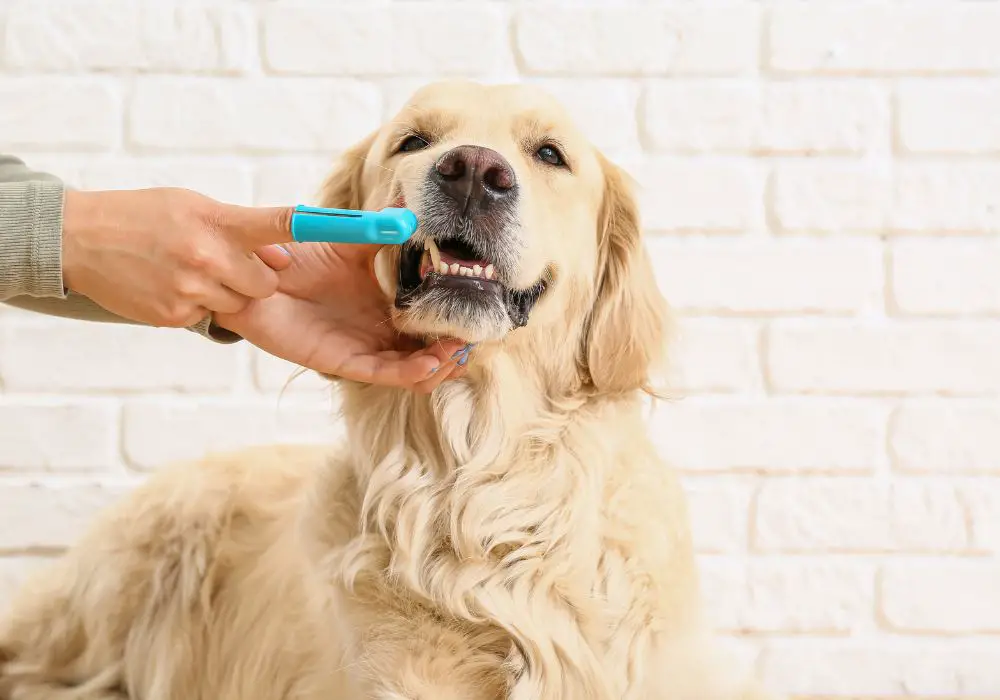
If your dog is not a fan of tooth brushing, there are other ways to maintain their dental hygiene. Here are two alternatives to tooth brushing that can help keep your dog’s teeth clean and healthy:
Dental Treats
Dental treats are a tasty way to clean your dog’s teeth. They come in various flavors and sizes, and some are designed to be chewed for a longer time to help remove plaque and tartar.
When choosing dental treats, look for those that have the Veterinary Oral Health Council (VOHC) seal of approval. This seal indicates that the product has been tested and shown to be effective in reducing plaque and tartar buildup.
It’s important to note that dental treats should not be used as a substitute for tooth brushing. They can be a helpful addition to your dog’s dental care routine, but regular brushing is still necessary for optimal dental health.
Professional Cleaning
Just like humans, dogs need professional dental cleanings to remove stubborn tartar and plaque buildup. A professional cleaning involves scaling and polishing your dog’s teeth, which can only be done under anesthesia.
It’s recommended that dogs have a professional dental cleaning at least once a year, but the frequency may vary depending on your dog’s individual needs. Your veterinarian can help you determine the appropriate schedule for your dog.
While professional cleanings can be expensive, they are an important part of maintaining your dog’s dental health. Regular cleanings can help prevent dental disease and other health problems that can arise from poor dental hygiene.
In conclusion, while tooth brushing is the most effective way to clean your dog’s teeth, there are alternatives that can help maintain their dental health. Dental treats and professional cleanings can be helpful additions to your dog’s dental care routine. Remember to always consult with your veterinarian to determine the best dental care plan for your furry friend.
Frequently Asked Questions
What are the best dog toothpaste brands?
Some of the best dog toothpaste brands include Virbac C.E.T. Enzymatic Toothpaste, Petrodex Enzymatic Toothpaste, and Nylabone Advanced Oral Care Toothpaste. These toothpaste brands are specially formulated for dogs and contain ingredients that help prevent plaque and tartar buildup.
How often should I brush my dog’s teeth?
Ideally, you should brush your dog’s teeth every day. However, if you are unable to do so, aim to brush their teeth at least three times a week. Regular brushing helps prevent dental problems such as gum disease and bad breath.
Can I use baking soda to brush my dog’s teeth?
Baking soda can be used to brush your dog’s teeth, but it should be used sparingly. Too much baking soda can be harmful to your dog’s teeth and gums. It’s best to use a toothpaste that is specifically formulated for dogs.
What can I use to brush my dog’s teeth if I don’t have toothpaste?
If you don’t have dog toothpaste, you can use a mixture of water and baking soda or water and hydrogen peroxide. However, it’s important to note that these alternatives should only be used in a pinch, and you should aim to get dog toothpaste as soon as possible.
Can I use a regular toothbrush to brush my dog’s teeth?
You can use a regular toothbrush to brush your dog’s teeth, but it’s best to use a toothbrush that is specifically designed for dogs. Dog toothbrushes have softer bristles and are angled to make it easier to reach all of your dog’s teeth.
Is it safe to use human toothpaste on dogs?
No, it is not safe to use human toothpaste on dogs. Human toothpaste contains ingredients that can be harmful to dogs, such as xylitol and fluoride. Always use a toothpaste that is specifically formulated for dogs.

